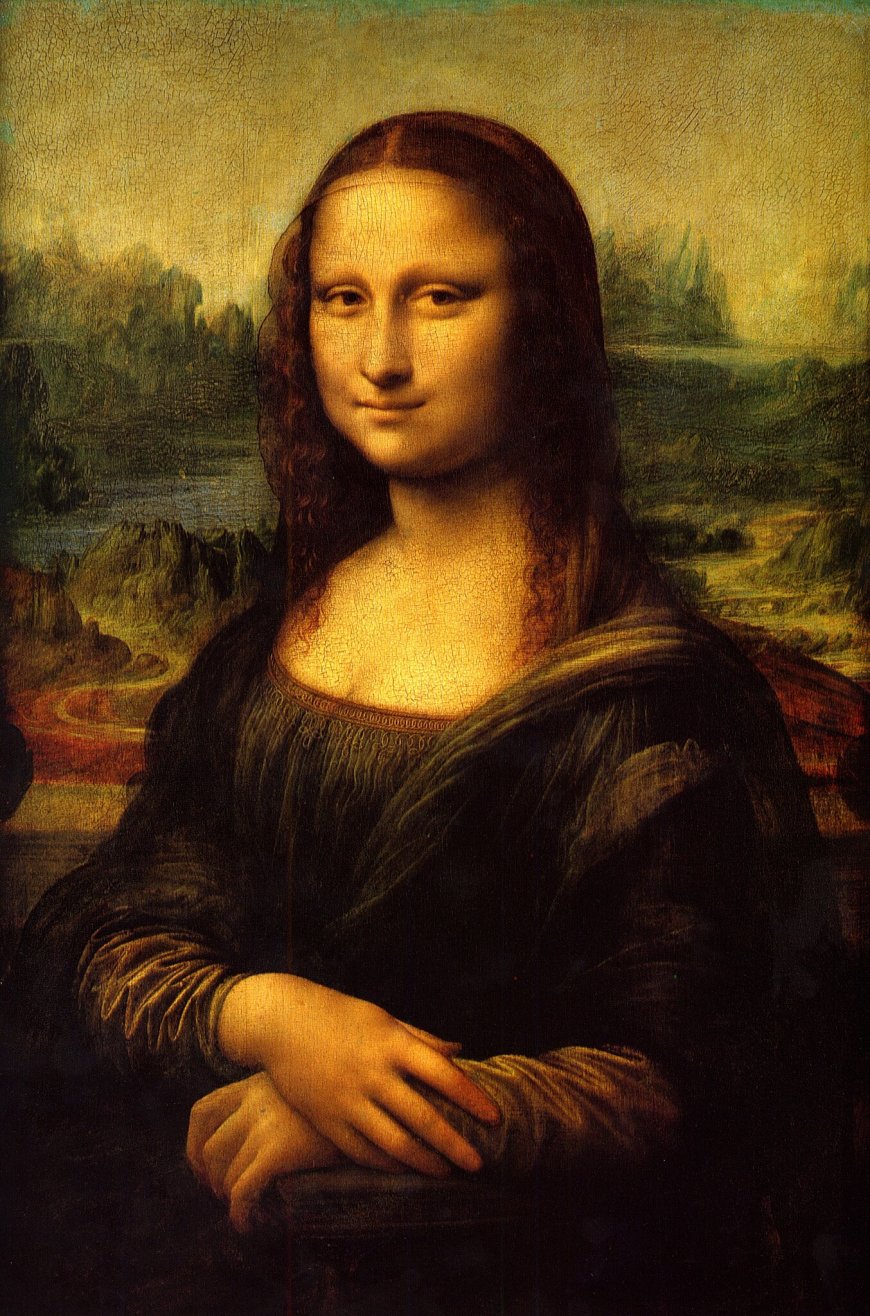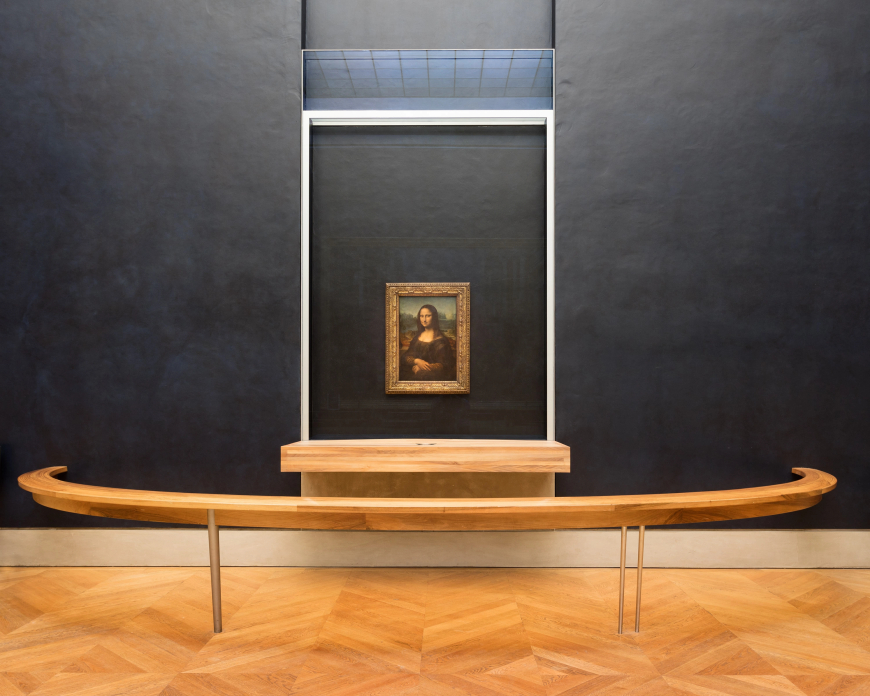The Artistic Genius of the Mona Lisa
The Mona Lisa, also known as La Gioconda in Italian or La Joconde in French, is a portrait painting by Leonardo da Vinci, created between 1503 and 1506, with some experts believing it was worked on until 1517.
The Artistic Genius of the Mona Lisa
The Mona Lisa, also known as La Gioconda in Italian or La Joconde in French, is a portrait painting by Leonardo da Vinci, created between 1503 and 1506, with some experts believing it was worked on until 1517. It depicts a woman with an enigmatic expression and is one of the most famous and studied works of art in history.
Why is the Mona Lisa So Famous?
- Leonardo da Vinci's Skill: The painting exemplifies Leonardo's mastery of sfumato (a technique of blending colors and tones) and perspective, making the portrait feel lifelike.
- The Mystery of the Smile: Her ambiguous expression has sparked centuries of debate about her mood and what she might be thinking.
- Historical Significance: It is one of the few surviving works by Leonardo, showcasing Renaissance ideals of humanism and naturalism.
- Theft in 1911: The painting was stolen from the Louvre, making headlines worldwide. It was recovered in 1913, but the incident greatly increased its fame.
- Public Accessibility: Displayed at the Louvre in Paris, it has been accessible to millions of visitors over the years.
- Cultural References: The Mona Lisa has been endlessly referenced and parodied in popular culture, cementing its place in the public imagination.
How Much Is the Mona Lisa Worth?
The Mona Lisa is considered priceless and is insured for over $1 billion. It has the highest insurance value for a painting in history, and due to its cultural and historical significance, it is effectively irreplaceable.
Fun Facts About the Mona Lisa
- Identity Mystery: While most experts agree the subject is Lisa Gherardini, the wife of a wealthy Florentine merchant, this is not definitively proven. Some theories suggest it could be a self-portrait of Leonardo or an idealized composite.
- No Eyebrows?: The painting lacks visible eyebrows or eyelashes, which some attribute to cleaning or fading over time, though others believe Leonardo intentionally left them out.
- It’s Smaller Than Expected: The painting measures just 77 cm x 53 cm (30 in x 20 in), often surprising visitors expecting a larger work.
- She Moves with You: Her eyes and expression appear to follow viewers around the room, a phenomenon caused by Leonardo’s use of sfumato and perspective.
- Leonardo Kept It: Leonardo did not deliver the painting to its original patron. He brought it to France later in his life, where it was eventually acquired by King Francis I.
- Protected by Bulletproof Glass: After being attacked multiple times (once by acid and once by a rock), the painting is now displayed behind bulletproof glass.
- A "Copy" Dispute: A nearly identical version of the Mona Lisa, known as the "Isleworth Mona Lisa," exists and some believe it was an earlier version painted by Leonardo.
- Napoleon's Obsession: Napoleon Bonaparte had the painting hung in his bedroom during his reign.
- Unknown Landscape: The landscape behind the subject does not represent a specific location, adding to the painting’s mystique.
- A Global Icon: The Mona Lisa has traveled worldwide, including to the U.S. in 1963, where it was displayed in Washington, D.C., and New York City.
Sfumato: The Technique That Defines the Mona Lisa
Leonardo da Vinci’s Mona Lisa is renowned for its use of sfumato, an Italian term meaning "soft" or "smoky." This technique involves the delicate blending of colors and tones to create a seamless transition between light and shadow.
-
Soft Gradients:
- Unlike harsh lines, sfumato uses fine brushstrokes to merge tones. This is particularly evident in the Mona Lisa’s face, where her cheeks transition almost imperceptibly into the shadows around her jawline.
-
Lifelike Texture:
- Sfumato gives the skin a realistic, almost translucent quality. The subtle gradations of light mimic the way light interacts with human skin, making the portrait appear lifelike.
-
The Enigmatic Smile:
- The corners of her mouth and eyes showcase sfumato’s brilliance. The ambiguity of her smile stems from the way shadow and light play together, creating a dynamic expression that seems to change depending on the viewer's angle.
-
Atmospheric Perspective:
- The background employs sfumato to create depth. The distant mountains and rivers fade into a hazy blur, enhancing the three-dimensional quality of the painting.
Innovations Beyond Sfumato
-
Layering and Glazes:
- Leonardo applied multiple thin layers of oil paint, some so fine they are almost invisible to the naked eye. This layering added depth and richness to the colors.
-
Perspective and Proportions:
- He used anatomical precision to perfect Mona Lisa’s proportions. Her gaze follows viewers due to a combination of precise geometry and clever use of light.
-
Chiaroscuro:
- This is the contrast of light and dark to give volume to forms. While sfumato provides subtle transitions, chiaroscuro adds the bold contrast that defines her features.
Why These Techniques Matter
The techniques used in the Mona Lisa were groundbreaking for their time, representing a shift from the flat, symbolic art of the Middle Ages to the realistic, human-centered art of the Renaissance. Leonardo’s meticulous attention to detail and innovation established new standards for portraiture and secured his place as one of history’s greatest artists.
What's Your Reaction?


























